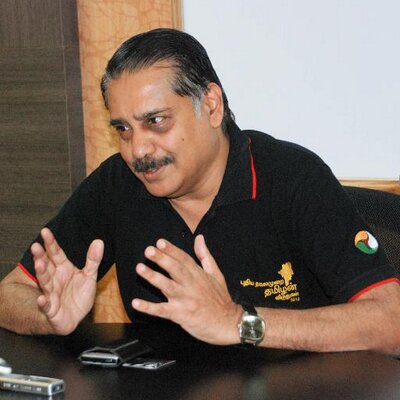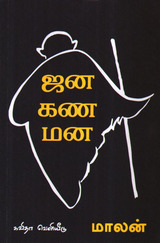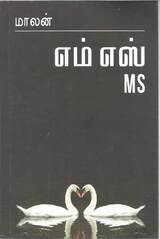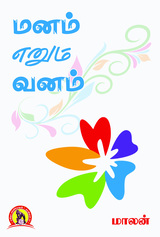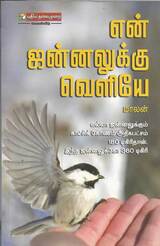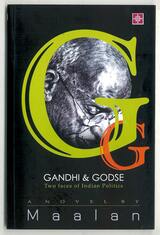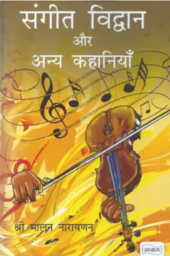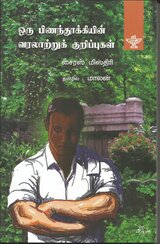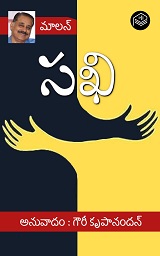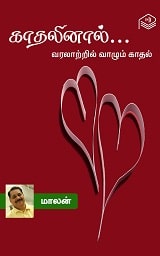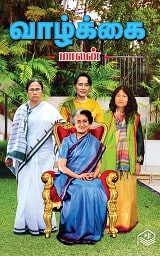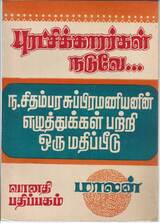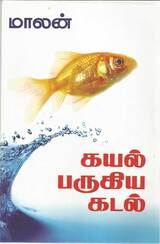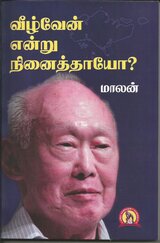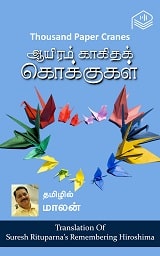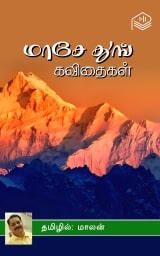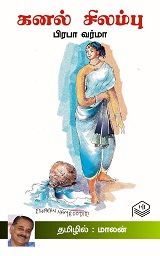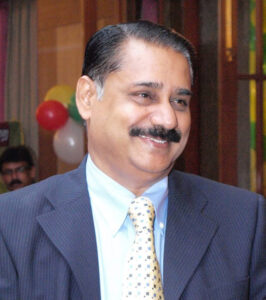When Congress President Sonia Gandhi opted to drive straight to the DMK headquarters, Anna Arivalayam rather than to her own party’s state office at Sathyamurthy Bhavan, on Feb 13 2004, the Chennai press was little surprised but had a nagging question up their sleeves. When she walked out after meeting the DMK supremo, press quizzed her on the interim report of the Jain Commission which looked into the assassination of Rajiv Gandhi. The interim report of the commission had indicted the DMK leadership, which in turn led to the fall of I.K.Gujral’s government.
“There was some misunderstanding over the Jain report…” said Sonia. “The interim report made a few comments but the final report did not make any negative comments on the persons concerned,” she said.
A senior journalist sitting next to me on hearing what she said murmured into my ears “Gosh! Sure Rajiv would be turning in his grave”. “Maybe Anna too!” quipped another friend. Anna was C.N.Annadurai, the founder of DMK.
Indian politics is full of ironies but the most horrid among them is the alliance of DMK with Congress, because, DMK was born out of Justice Party, an arch rival of Congress during the freedom struggle. Ideologically they are poles apart. When Congress was spearheading the non-cooperation with British in the ‘30s, Justice Party was indulging itself in the favours and blessings of the then rulers. In 60s Congress was harping on pan-nationalism and DMK was agitating for Dravida Nadu, a separate nation for Tamils. In 1965 when Congress was toying with the idea of declaring Hindi as National Language, DMK was busy burning the language bill. DMK has an entrenched animosity against Brahmin supremacy. Leaders with Brahmin lineage had led the Congress from the front. Shortly, if Congress is from Mars, DMK is from Venus, but they are happily married today.
Electoral compulsions of independent India has forced Congress and DMK, and almost all political parties in India, to drift far away in their ideological stance they had during August 1947. It would make an interesting study if some academician can embark on it. But a study on the emergence of regional political parties in the post-independent India and their kingmaker role in making and breaking the governments, and the political processes that ensured their clout will make a more interesting study.
Up against Brahmins
DMK, an abbreviation for Dravida Munnetra Kazhagam (a federation for the progress of Dravidians) was born in free India in September 1949. But it had its roots in Justice Party, an outfit promoted by a few upper-class liberals during December 1916, who took pride in their identity as non-Brahmins. The basic premise for the pride, though there is no adequate historical evidence to support this theory, was Dravidians are the natives of India but were conquered by Aryans who invaded India from central Asia around 2000 B.C. Vedic religion which is a manifestation of Aryans which held Brahmins are supreme and relegated Dravidians as Sutras, the lowest in the hierarchy.
Whatever may the conviction racially, they had a grouse politically. Prof. Eugene F Irschick, of the University of California at Berkeley, writes.” In late 1916, several individuals who were not Brahmins and who had previously been fighting with each other, joined together to form what came to be called the Justice Party. One of the reasons why these leaders – who called themselves non -Brahman – united was the fact that several had been defeated for various political offices in that year by Brahmans” In 1914 14 out of the 16 members of the Madras Pradesh Congress Committee were Brahmins.
Justice Party entered the political arena with a communal card and had its own successes and failures. In the first elections to the legislative councils held in 1920, under Mont -Ford reforms, Justice Party had a cakewalk, because, Congress had left the field entirely to them under its program of boycotting legislatures. Justice Party ruled the roost till 1936, except for 3 years in the middle, as the ambivalence of Congress continued.
Periyar Pitches in for Self Respect
Almost at the same time when Justice Party was steering the non-Brahmin agenda to the political center stage from Chennai, E.V.Ramaswami Naicker, who would be fondly revered as Periyar (great man), a congressman imprisoned during the 1921 non-cooperation campaign, was spearheading a social movement, known as “Self Respect Movement’ from a market town, Erode in the western Tamilnadu. Self Respect Movement urged the need to eliminate superstitions perpetuated in the name of religion, particularly Hinduism, and to eradicate differentiations based on birth. It believed that these goals could be accomplished through eliminating Brahmin priests, encouraging inter-caste marriages, and by ending untouchability, and empowering woman. Self-respect movement considered these are issues of high importance than political freedom. Periyar posed the question of what would happen to the oppressed castes in case of transfer of administration from the British to the Brahmin-dominated Congress. He went to the extent of calling August 15, 1947, as a ‘Black day’.
Periyar was able to mobilize and galvanize the mass in a much bigger way than the Justice Party through public meetings, state level conferences, and journalistic propaganda. As he himself served in the Erode Municipality as Chairman, he had no difficulty in bringing a few local Congress leaders into the movement. He was not shy in asking for the support of the rich non-Brahmins. The liberal social reform outlook of the Self-respect movement attracted the youth and Periyar welcomed them and offered them leadership positions. For example, when S.Guruswami, presided over a state level conference at Pattukkotai in 1929, he was only 23 years old.
From Palaces to Street
By 1929 Self respect movement possessed political assets in their agitational abilities and their anti-Brahmin invective. Yet on the other hand, with the arrival of Gandhi in the Congress leadership and his visit to Tamilnadu in 1930, Congress was gaining grounds. Justice Party sought the support of Periyar. In December 1938 Periyar was elected, when he was in jail for taking part in anti-Hindi agitation, as the President of Justice Party, as Raja of Bobbili resigned the post. He was unwilling to support the anti-Hindi agitation because he was negotiating with the then Congress government on the tax to his estates. Soon under Periyar’s leadership, through a resolution moved by C.N.Annadurai, (Anna) then joint secretary in a party conference, Justice Party re-christened itself as ‘Dravidar Kazhagam’
Periyar brought the politics from the palaces to the street. As Gandhi made Congress, a political forum founded by the upper-class elite, as a mass movement, Periyar turned the non -Brahmin movement founded by rich landowners into a mass movement. But he had no ambition for office, he declined twice the offer British made to him, to head the government and his Dravidar Kazhagam had never contested elections.
But the youth, brought into the movement by Periyar himself, had different ambitions for themselves. Among them was Anna, an orator, and a writer with a unique style. He had refused to share Periyar’s view that August 15, 1947, was a black day. Anna, being a writer himself had a love for Tamil while Periyar had called it as a barbaric language.
Bombshell Splits The Party
Periyar dropped a bombshell on June 28 1949, when he published a statement in his newspaper Viduthalai that he was planning to marry Miss K. A. Maniammai and to make her his heir. He said that he also intended to make Maniammai a trustee of party funds, along with unnamed four or five others. Miss Maniammai a relatively new party activist, was in her mid-twenties and Periyar was seventy.
Periyar’s marriage triggered a rebellion in his party and the rebels led by Anna brought first a newspaper on August 1949 and later in September founded Dravida Munnetra Kazhagam, widely known as DMK.
Astute Anna Arrives at Power
Though Anna described that DK and DMK are two barrels of a double barrel gun, DMK bid bye to Periyar’s anti-god policies for benefit in electoral policies. Periyar espoused that the invention of God by man was the basis for religion and religion thrives by perpetuating caste-based hierarchy and discrimination. Anna, after founding DMK said they are for one god and one race, acknowledging the concept of God.
Anna had a distinct political style that is very different from Periyar. Periyar got his movement isolated by his attitude of obstinate confrontation; Anna synthesised his party in the mainstream of national politics by judicious use of the art of compromise. He gave up Dravida Nadu, the demand for separate Statehood, for sheer political survival in the context of the Anti-Secession Act, in the mid-sixties. He forged an alliance with several parties, which are ideologically different in the political spectrum, like Rajaji’s Swatantra Party and Communists at the same time. He was able to defeat Congress and came to power in 1967. And Congress, though was able to return to power in many states, it is still at wilderness in Tamilnadu after that death knell.
He was perhaps the only leader of any party, who allowed the second line of leadership to emerge in his own lifetime but even went out of the way to spot such talent and encouraged them to develop as future leaders. This paid rich dividends to the party, which produced a notable line of leaders. An orator of extraordinary brilliance, a writer of considerable merit, a parliamentarian of remarkable talent, Anna’s worth as an administrator could not be assessed as his tenure as chief minister was cut short by his untimely death.
And Karunanidhi Consolidates
After Anna, Karunanidhi led the party through the turbulent times of Indian politics. In the days that followed the split in Congress, in 70’s he stood with Indra Gandhi and forged an alliance inside and outside the parliament. It is nothing but the irony of ironies that Anna forged an alliance with [G48] Rajaji, the arch-rival of Justice Party, Karunanidhi formed an alliance with Congress, which Anna opposed bitterly. But the Indira – Karunanithi political alliance turned into a marriage of convenience. When she promulgated Emergency he was in discord and paid the price, as it led not only to the dismissal of his rule but also he was slapped with a commission of enquiry for corruption charges.
Karunanidhi made DMK what it is today. He slowly, but steadily and surely built a constituency for the party with voters, bureaucracy, media, and in the national arena. In his first spell of power, he ensured 50% reservation for OBCs and enlarged the list by including more castes into it. This gave impetus to a generation among OBCs in Tamilnadu to take up to higher education. He built a fraternity of regional parties in other states like Akali dal and raised the bogey of State Autonomy. National Democratic Alliance under the leadership of V.P. Singh was born in Chennai and it was not a coincidence. He is rated as one of the good administrators as he is considered as a champion of federalism in Indian Politics.
DMK’s first spell of rule is remembered for two things: One, his dynamism in governance. His regime also has the dubious glory of institutionalizing corruption
Hero turns villain
M.G.Ramachandran, (MGR) once a close friend of Karunanidhi and a hero for millions of poor filmgoers turned a villain for Karunanidhi when he articulated the corruption charges against him. MGR and Karunanidhi friendship is a story of a love-hate relationship. They came to know each other in their younger days when they were looking for opportunities in the Tamil filmdom. Then [G51] Karunanidhi, apart from his political pursuits as a cadre in DMK, was a scriptwriter and MGR was an actor from a theatre group. Karunanidhi initiated MGR into politics by bringing him to DMK who later on became an MLA. Unlike Karunanidhi, MGR had not taken part in political agitations but he was very valuable as his charisma brought votes to DMK, particularly from the womenfolk. MGR played a key role in Karunanidhi getting elected as Chief Minister, immediately after Anna’s demise. MGR had an image of Mr.Clean voicing for the poor and helpless.
Karunanidhi, in an urge to consolidate his grip over the party, let his party men make their fortunes during his first and second regimes. MGR made accusations, publicly against this attitude and Karunanidhi had no option than to expel him from DMK.
Unfaced MGR started his own party, AIADMK and captured power. He kept Karunanidhi at bay and Karunanidhi, couldn’t return to power for 13 years as long as MGR was alive. MGR brought in populism in his administration. He introduced free midday meals in schools. This was followed by many populist freebies from tooth powder to chappals. His concept was simple: Give the fish to the hungry than teaching them fishing.
He remained a popular leader till his last breath. His party was elected to power even when he was hospitalized in Brooklyn in the USA after a stroke. In the 1984 elections since he was away in the hospital he didn’t speak a word nor travelled a mile, but his party returned to power. Such was the confidence the poor reposed on him.
MGR didn’t go through Periyar’s rationalist school as Karunanidhi, and he was a believer which he didn’t hide. He had never ridiculed Brahmins or for that matter any caste. He had a very warm relationship with Congress and Congress was his ally as long as he was alive. He prefixed his party with a tag ‘All India’ implying that it is not a regional party, though he has not fostered a relationship with other regional parties as Karunanidhi did. “He could be described as an illegitimate child of the Dravidian movement, as he was the offspring of the cohabitation between the movement and the movies,” wrote Cho Ramaswamy about MGR once. Cho attempts sarcasm here but yet he spells truth as well.
Anti Brahmin legacy bequeathed to a Brahmin
With Jayalalitha at the helm of affairs, at AIADMK, history had its sweet revenge on Periyar. Periyar had a disapproval for Brahmins, but Jayalalitha is a Brahmin and takes pride in it. He was ridiculing priesthood and rituals associated with Hinduism, but Jayalalitha has organized ostentatious rituals at her home at temples for her electoral victory. She had gifted an elephant to the temple at Guruvayur and many cows to various other temples. He is a believer of numerology and added another ‘A’ to her name with the hope that it would invoke fortune. Periyar had a disdain for Hindutva but Jayalalitha was the first Dravidian party to form an alliance with BJP.
Jayalalitha may lack Dravidian credentials, yet he was the one who enhanced the reservation for OBCs from 50% to 69% and empowered woman politically by offering them tickets in large numbers to contest for assembly. She also ventured out to empower them economically by promoting self-help groups in a large number. She had displayed her courage and audacity as well without any reservations on many occasions.
The story of Dravidian parties is akin to Greek tragedies, where an ideology born out of egalitarianism, windswept by the lust for power by a few individuals. Its leaders, who are prolific writers themselves, have authored this tragic script. Today these parties, with their impoverishment of initial idealism stand in testimony to nepotism, corruption and sycophancy, the elements any democracy can hardly cherish.
-Sadhana Weekly – 14-21 June 2008

